Virtual Collection Registry
12 April 2021
Virtual Collection Registry
1. Virtual Collections
Any form of research relies on reproducibility and citability. Usually a scientific publication will come with a bibliography based on persistent references. The same should apply for the documentation of the research data. This has become a topic of growing importance for researchers, as more and more research data becomes accessible online, gets re-used and cited. Furthermore, in the preparation of research data sets, the need for advanced ways to versionise, group, and share data both within and outside organisations has become paramount.
A Virtual Collection (VC) is a convenient means for referencing research data and other sources. It allows researchers to create an aggregation of various data resources connected to a certain research purpose. The VC may cover resources from various repositories or other services, such as the result of database queries, as long as they are persistent. These resources will most probably have been generated by different researchers and teams and managed by different organisations.
Since metadata is open and can be combined in an autonomous way, any researcher can build virtual collections. Ultimately, researchers, as well as other actors of the research cycle, may want to access the resources that are aggregated in such virtual collections and may require access permissions to do so.
While it is impossible to create new data-sets/corpora for every occasion and purpose, VCs will allow the researcher to arrange and re-use existing resources and collections for new purposes. VCs are independent of any particular resource repository implementation, hence the aim is to facilitate their creation and use from as many resource repositories as possible.
2. The Virtual Collection Registry (VCR)
The SSHOC Virtual Collection Registry offers a researcher-friendly way to organise research data references, for example:
-
To preserve the context of their research, which can be a collection of various resources and resource types, by the aggregation of resources across catalogues. This facilitates the re-use of the research for the sake of good scientific practice;
-
To access large samples of data with regard to a specific research domain or research question which are investigated by an individual researcher or a research group;
-
To prepare resources for specific workflows, i.e. combine metadata representations into self-defined views and hierarchies (potentially in combination with the Switchboard) and create special collections based on aggregations of selections of different data-catalogues for comparison;
The Virtual Collection Registry (VCR), currently operated by CLARIN, the European Research Infrastructure for Language Resources and Technology, enables the creation of DOI-identifiable VCs across the SSH spectrum, and beyond, as the VCR metadata model is not limited to SSH. It provides a way for registering, accessing and discovering VCs by simplifying access for researchers.
The basis for the creation of virtual collections is a joint domain of compatible metadata descriptions. Thus, virtual collections can boost the re-usability of existing resources, therefore facilitating empirically sound e-Science in the arts and humanities.
3. Use the VCR to:
-
Populate a personal workspace, using the VCR’s memory of previous data selections.
-
Share data selections with fellow researchers or broader/public audiences. An important feature that has been enabled by SSHOC, next to many usability improvements, is the creation of DOIs for virtual collections.
4. Using VCs: Browsing and inspecting, sharing and citing via DOI, sending to switchboard for processing:

1. Browsing the VCR

2a. Inspecting the VCR
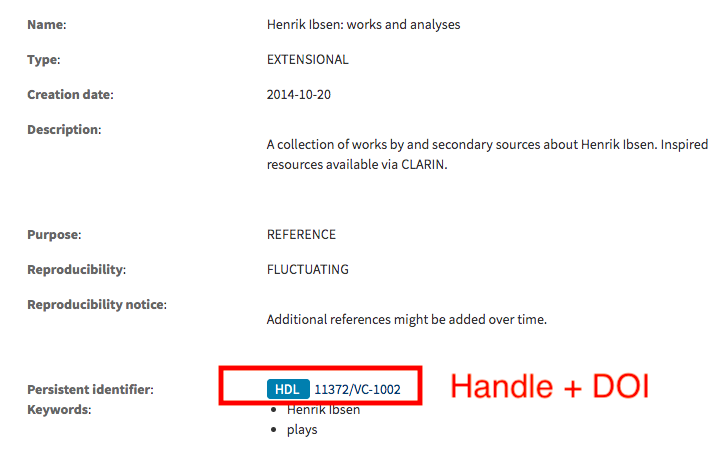
2b. Inspecting the VCR
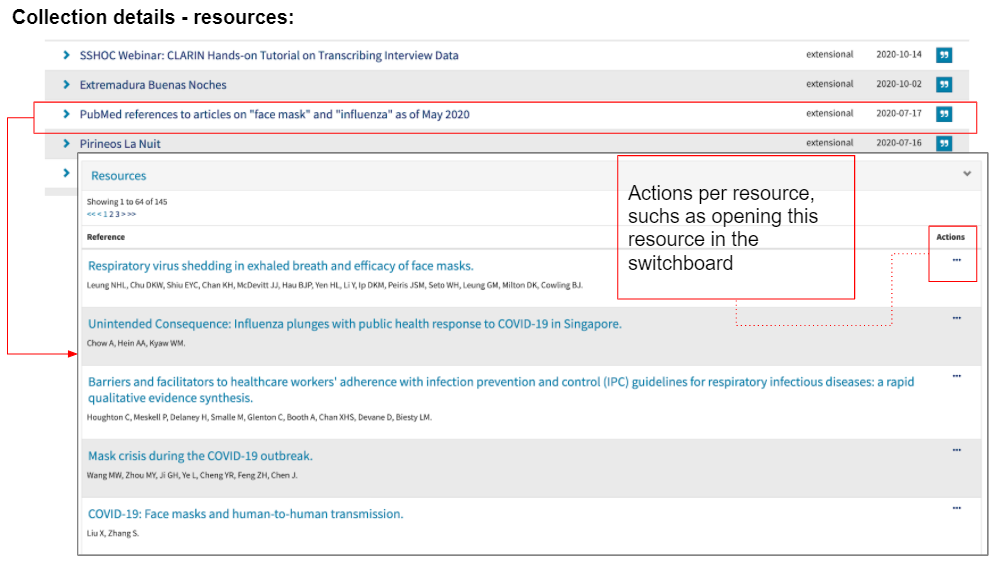
3. Sharing via DOI
5. Creating VCs: How to provide context for research:
Go to https://collections.clarin.eu/public?0, log on and click on Create button.

Name it in field Name and do fill in other fields, in particular Authors
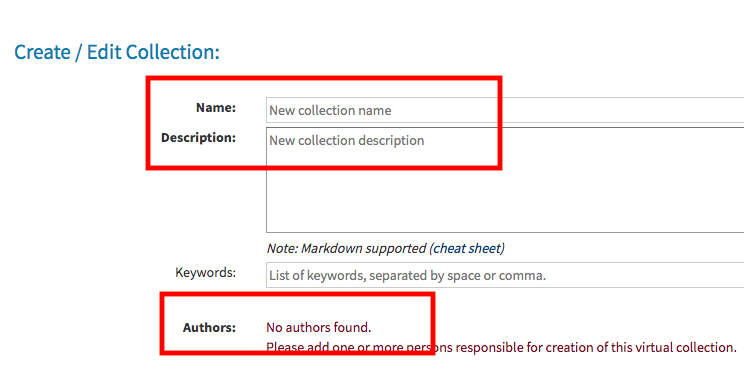
and References.
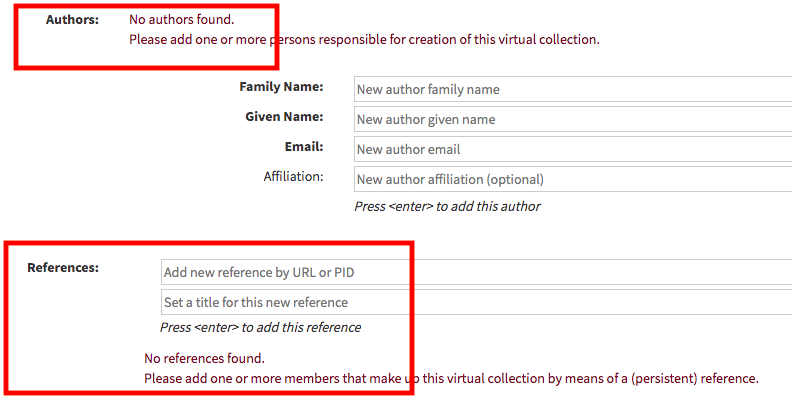
Press Save Collection:

6. Third party data catalogue integration: How to create VCs via a search in an external data catalogue
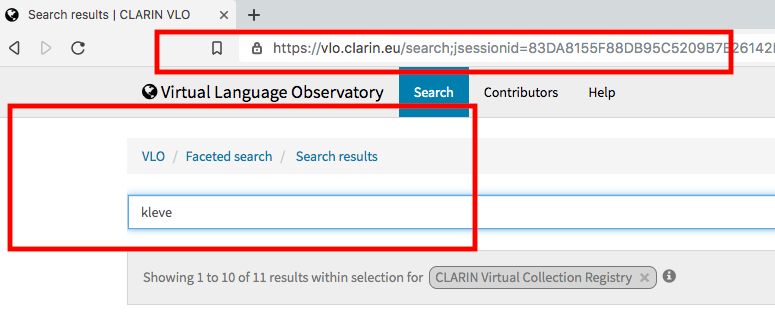
Save results from CLARIN Virtual Language Observatory (VLO)
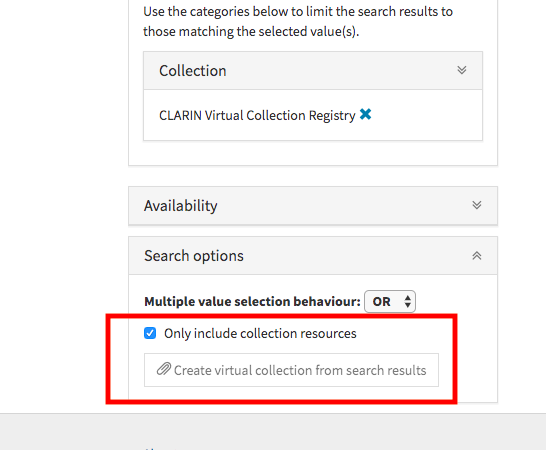
Submit search results to Virtual Collection Registry
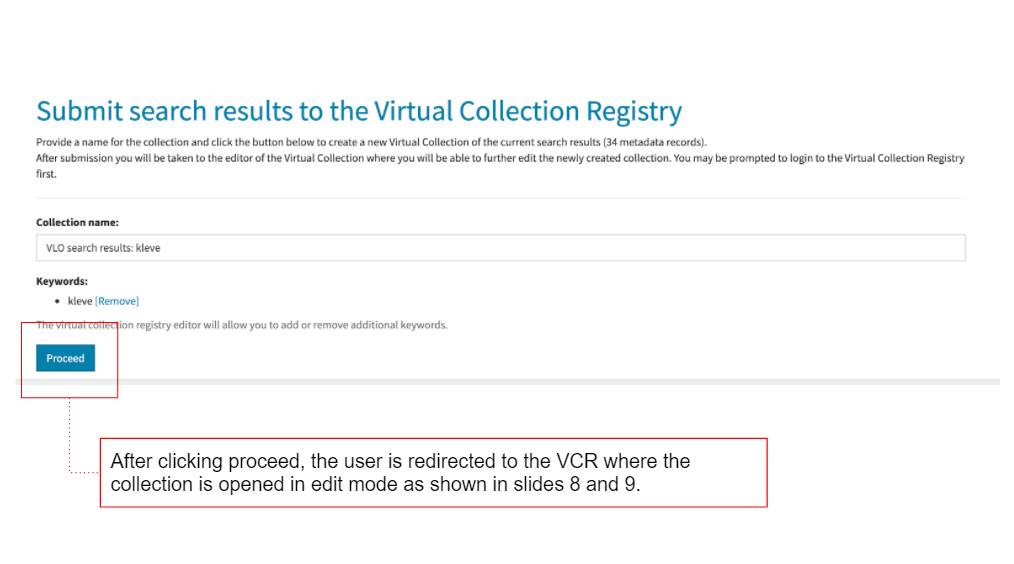
The VCR is one of the EOSC thematic services and registered at the EOSC portal.

References:
-
Virtual Collection Registry website [https://collections.clarin.eu/public?0]
-
Short guide on CLARIN Virtual Collections (February 2010) [https://www.clarin.eu/sites/default/files/virtual_collections-CLARIN-ShortGuide.pdf]
-
VCR in EOSC marketplace [https://marketplace.eosc-portal.eu/services/virtual-collection-registry]
-
Virtual Language Observatory [https://vlo.clarin.eu/search;jsessionid=7DDEB758CEC3F842424454CB80DE1710?0&fq=collection:CLARIN+Virtual+Collection+Registry]
-
Switchboard [https://switchboard.clarin.eu/]